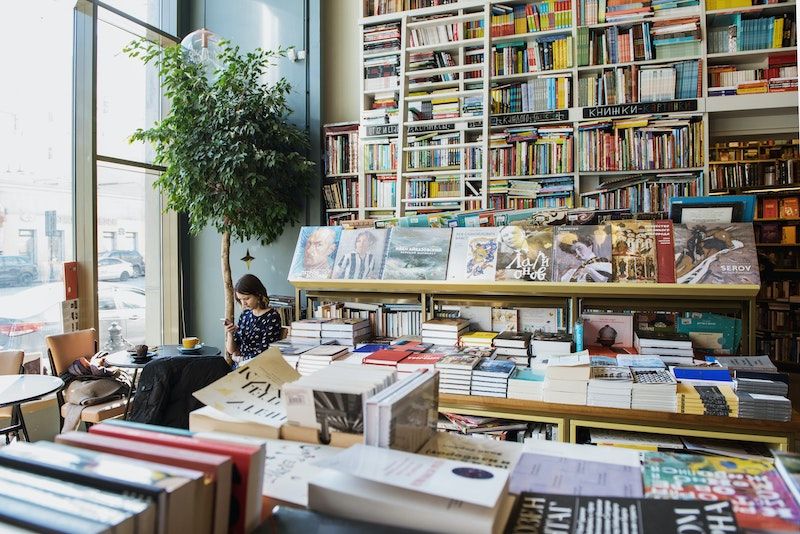How we found books to read — and where we bought them — in 2022

This post is the second in a series of six posts on our findings from our State of the Reader 2022 survey. We conduct this survey every year to shed light on who readers are and what makes them tick.
Recommendations were the most common — and beloved! — way to find books to read.
On average, respondents received recommendations from five different kinds of sources in 2022 — most commonly, friends/family, social media, authors, reading apps, and bookish newsletters or podcasts. (The most frequently mentioned newsletters/podcasts were Read Like the Wind, Currently Reading, and Novel Pairings.)
As a category, Recommendations just barely beat out Browsing for the favorite form of book discovery. We heard some particularly heartwarming stories about friends/family recommendations, as from this Millenial woman and her Boomer great-uncle:
“My 75-year-old great uncle always shares book recommendations with me. I'm a 31-year-old woman so there is quite an age gap (among other differences) but we have very similar book preferences and it's a really sweet thing to share and bond over.”
However, we also heard that friend/family recommendations could be fraught: just because you love someone doesn’t mean you love their taste in books! Some said they felt an outsized sense of obligation to accept recommendations from loved ones. As one summed up the tension, “Because I read a lot, I get a lot of unwanted recommendations, and then I feel obligated to read them or guilty for not!”
We also heard frustration with algorithmically-driven recommendations, which respondents felt consistently missed the mark. As one put it, “Goodreads/Amazon knows 95% of my reading behavior and still gives not only bad but terrible recommendations.”
Browsing shelves was the other favorite way to find good books.
Respondents also treasured the experience of browsing bookstore and library shelves, describing this form of discovery as peaceful and serendipitous.
While they valued thoughtfully curated shelves and handwritten recommendations from booksellers and librarians, respondents also appreciated that browsing was inherently individual and self-directed. Rather than engaging in conversation or feeling accountable to anyone else’s opinions, they could simply let themselves gravitate towards whatever spoke to them in the moment.
"I love to browse — sometimes I feel like I've become too reliant on recommendations and ratings, and try to think about what draws me in and what I actually want to read."
Aside from receiving recommendations and browsing bookshelves, respondents discovered books in a range of other ways — including but not limited to book clubs; book subscription services; bestseller lists; award recipients; advance reader copies; and following along with their favorite audiobook narrators. Whew!
Finding books was much easier than choosing which one to read next.
Since they had no shortage of sources for discovery, respondents emphasized that their TBR (To Be Read) List could grow at a pace that struck them as more intimidating than inspiring. As one succinctly stated: “So many books!! So little time!!”
Accordingly, when we asked respondents whether discovering or prioritizing books was their bigger challenge, consensus was clear: eight times as many said prioritizing what they wanted to read was more challenging than discovering it in the first place.
They explained that their ever-growing TBR — whether physical or virtual — could feel simultaneously exciting and overwhelming, particularly when they knew they’d never be able to get through everything they wanted.
“I’m in a love/hate relationship with all the great books on my shelf … For every book I read, in that same week, ten more get added.”
And when the analysis paralysis was particularly acute, some respondents found themselves stuck in perpetual decision-making — at the expense of actually reading! As one put it, “I have such a massive TBR list I end up with decision fatigue when it comes time to actually pick the next book I want to check out — this means I don't always have a book at-the-ready when I have a spare chunk of time.”
Respondents got their books in a range of ways.
Once they’d decided what they wanted to read — as seen above, no small task! — respondents accessed books in a variety of ways, most commonly by buying them, borrowing them from a public library, or owning them already.
As this chart makes clear (since the percentage values sum to 328%!), most respondents relied not on one single source, but on several different ones.

Resale markets were booming — and buying books was no exception!
So-called “recommerce” across all industries grew twice as fast as the wider retail market in 2022, with upwards of 80% of Americans buying and selling secondhand goods. And while apparel, electronics, and furniture led that charge, books didn't seem far behind!
Among the 91% of respondents who bought books in 2022, nearly three-quarters (74%) bought some, most, or all of them secondhand. Sources for secondhand books included digital marketplaces like PangoBooks and IRL ones like thrift stores, library sales, and independent bookstores with used-book selections.
Speaking of shopping at independent bookstores...
We were thrilled to see that independent bookstores were the most popular source for book-buyers seeking new and used books alike, with 78% of respondents purchasing from them in 2022.
Amazon came next at — we can’t make this up — precisely 66.6%. (Note from our CEO: We’re sure the devilish associations are a total! random! coincidence!)
And less dramatically, just over half of respondents purchased from chain bookstores like Barnes & Noble, while just under one-quarter purchased from book subscription services and from Bookshop.org.
Next: Hard copies, ebooks, audiobooks, oh my! How did we read in 2022?
